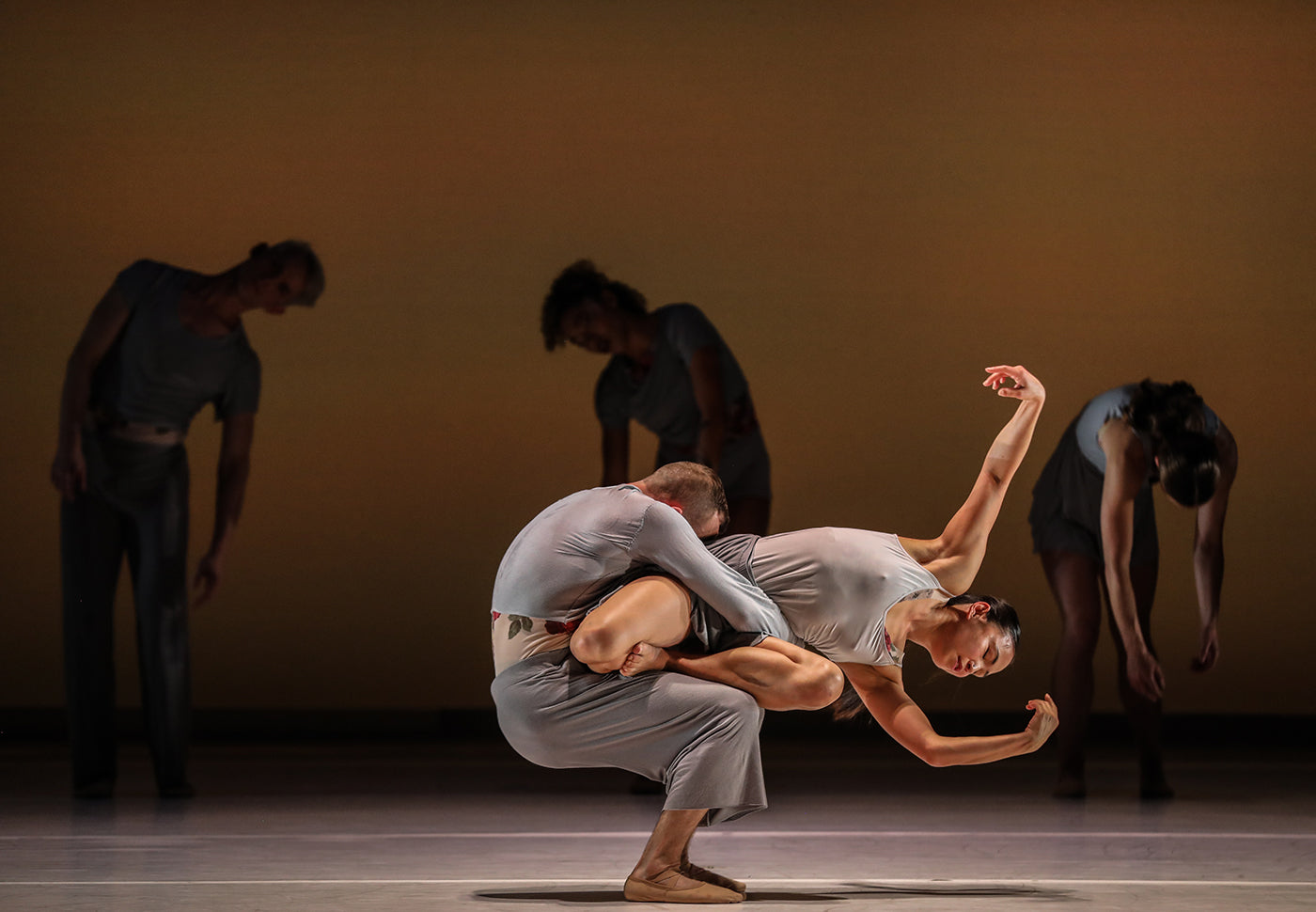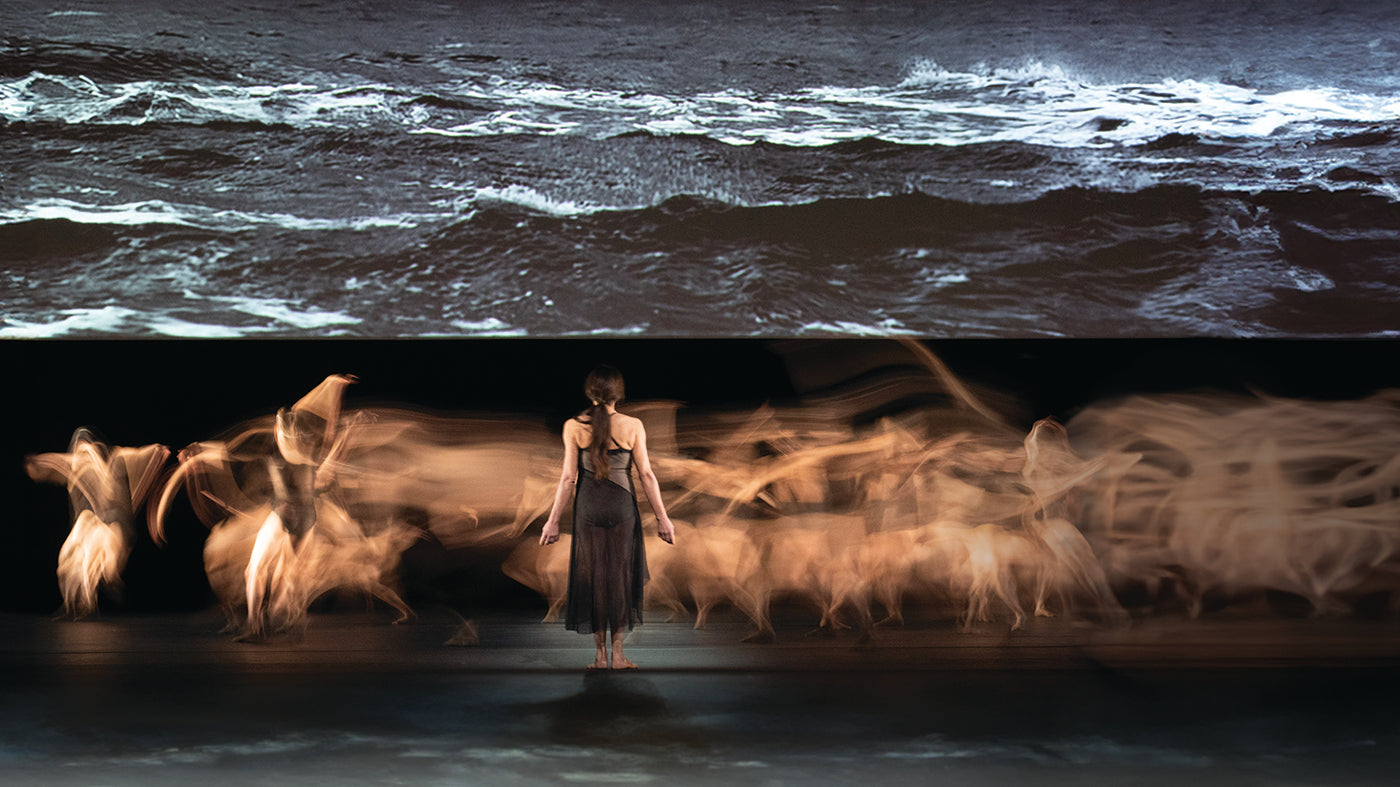Arnold Schoenberg’s “Pierrot lunaire” premiered the year prior to this, in Berlin on October 16, 1912, the culmination of some twenty-five rehearsals, but you would be wrong (as indeed I was, a Schoenberg novice) to think that it was received in the same manner as “The Rite of Spring.” “Pierrot” was and remains still provocative and awe-inspiring, but that is not to say that it was not well received at its premiere, as was the performance given by soprano Merlyn Quaife, Syzygy Ensemble, Songmakers Australia and BalletLab which I attended at the Melbourne Recital Centre recently (as part of this year’s Melbourne Festival).
Some, it is true, were confronted by the 1912 premiere of “Pierrot.” “The most ear-splitting combination of tones that ever desecrated the walls of a Berlin concert hall,”[note]Joseph Auner, “Ears of the Future: Schoenberg’s Pierrot lunaire at 100,” the Boston Globe, June 3, 2012[/note] was how one audience member described the work that prompted so many others artists to cover new terrain musically. It is a work that can be many things to many people. Fascination, awe, and provocation: these are powerful motivators. “After hearing Pierrot in December 1912, Stravinsky composed the eccentric second and third movements of his Three Japanese Lyrics for a similar ensemble; Stravinsky’s astonished descriptions of “Pierrot” one month later inspired Ravel to write his Three Poems of Stéphane Mallarmé.”[note]Auner, “Ears of the Future,” Boston Globe, 2012[/note] I wondered what the gathering assembled some 100 years later would see and feel. Of the New York City premiere on February 4, 1923, critic Lawrence Gilman wrote that the performance “disrupted families, severed life-long friendships, incited critics to unbrotherly remarks about one another, and filled whole pages in the Sunday music sections of the newspapers.”[note] Lawrence Gilman quoted by David Metzer, “The New York Reception of Pierrot Lunaire: The 1923 Premiere and Its Aftermath,” The Musical Quarterly, vol. 78, no. 4 (winter 1994), 669[/note]
Did anyone leave Wednesday’s intimate performance at the Salon, I wondered, with a life-long friendship now severed?
As with Michel Fokine’s “Petrushka,” the character of Pierrot is one well known, from appearance to persona. The outsider, the sad clown, he is a character in which we recognise ourselves. Throughout the years, his costume may vary but we recognise him instantly by his sad eyes. It is the deeply vulnerable Pierrot that drew me to this performance. A cycle of poems in French by Belgian writer Albert Giraud was the source text for Schoenberg’s “Pierrot.” BalletLab’s director Phillip Adams’ “Pierrot” is for three dancers (himself included), and it celebrates the 50th anniversary of Glen Tetley’s “Pierrot lunaire,” a work that calls on the movements of the face to convey a wide range of emotions and expressions that we have come to associate with Pierrot.
Half-ballet, half-modern dance, “Pierrot lunaire” epitomises Tetley’s style, legs and feet balletically elongated, torso arching with grahamesque fullness, the whole body now acknowledging tension, now soaring into release. Although today’s choreographers are constantly breaking down the boundaries between genres, decades ago Tetley's pioneering fusion provoked disapproval from certain quarters. But he never doubted the rightness of his duality. “I have always existed in both worlds,” he said, “and never felt them to be anything but one world.”[viii]
BalletLab’s choreography leans on this blurred distinction between ballet and modern dance, and sits comfortably with Schoenberg’s music to Giraud’s words that are recited rather than sung. The dancers walk in a circle, anticlockwise. From the four clothing racks that are placed at intervals throughout the Salon, the dancers perform several costume changes that reference the poem and its many interpretations, effectively blurring the line between what is on stage and what is behind stage. The costumes reference the landscape described in the poem; they are a beautiful and varied array that end up being little worn. The dancers respond to the music but, for me, have little to do with Merlyn Quaife, the Syzygy Ensemble, and pianist Andrea Katz of Songmakers Australia and I was searching for a greater interaction between the two, between dance and music.
Of ballet/dance and music united in this way, I have seen two other melds. “El Amor Brujo,” a chamber ballet by Ensemble Liaison and JACK Productions at the Melbourne Recital Centre (in 2011), remains a brilliant example of this. The artists were interested in exploring the question “how does one completely surrender to and give genuine emotional physicality to musical energy?”[note]Robin Usher, “Still daunting and haunting even after all these years,” The Saturday Age, October 20, 2012[/note] Drawing upon the ‘dance’ that musicians perform with their instruments, the dancers in this work responded to the music, and the musicians responded to the dancers. At times, the dancers would be at the fore, and at others, they sat on the nearby seats on the stage in artful collapse or pulled-up pose, actively listening to the musicians. This exchange between dance and music was what I was looking for in this recent performance of “Pierrot lunaire.”
The familiar, well known character of Pierrot is everywhere throughout history, from the mime talents of Charles Deburau by way of Antoine Watteau’s Gilles (or Pierrot) and Four Other Characters of the Commedia dell'arte (painting c. 1718 in the collection of the Musée du Louvre, Paris) to David Bowie dressed as Pierrot on the cover of the single “Ashes to Ashes” (1980). Pierrot even appears with Pierette, Harlequin, and Columbine in a red-herring laced murder mystery in Agatha Christie’s The Affair at the Victory Ball (in Poirot’s Early Cases, published in 1974). There are many references across all manner of mediums that a list would be as long as it would be varied. Perhaps, given Pierrot’s adaptability it is from this footing that I should look at the choreography. To BalletLab’s Phillip Adams, “the performances decadently re-imagine Pierrot, the clown of legend fit for the fag that has everything.”[note]Nadine Meisner, Glen Tetley’s obituary published in the Independent, February 12, 2007[/note] I had not seen him that way before and while the performance did not necessarily convince me either, who am I to say or expect how Pierrot should be? The three short solos within the performance were nonetheless more engaging than the slow encircling of the musicians.
The piece, performed in a circle of seven musicians including conductor Daniel Carter, sees Merlyn Quaife move three times so as to ensure we all see something of her face that conveys such a wide range of emotions. (‘It’s perhaps not coincidental that these “three-times-seven poems” are the numerologically-obsessed Schoenberg’s Opus 21’[note]Phillip Adams, BalletLab website notes for “Pierrot lunaire,” October 23, 2012[/note] which draws (from 50) 21 poems grouped into three distinct parts.) The audience was seated in an outer circle around this knot of musicians and dancers. Being a circle, there is no front. The seating, too, was general admission, so the audience decided upon arrival where to sit. To begin, for part one, I saw Quaife from behind, her face was lit rendering her for me a moving, spiked silhouette. The second aspect correlating with the poem’s shift from the moon and moonlight to an atmosphere of darkness found Quaife facing me. ‘The poems of part two describe a nightmare of blasphemy and crime. The gigantic black moths of Night have massacred the sun’s glory, these monsters sink onto the hearts and souls of mankind. The poet makes a Prayer to Pierrot: “O give me once more… Your Lunar Highness, Pierrot—my laughter!”’ [note]“Pierrot lunaire” program notes supplied by the Melbourne Recital Centre to accompany the 2012 performance[/note] I cannot understand German but I felt I could as I watched her delivery of the work. You could read the German lines in translation upon her face and hear them in her tone. This was the “dance” I focused on. As Quaife herself remarks, “I have devised a way of expressing it so that I can refer to the music without being glued to it. My facial expressions portray what it happening to the character.”[note]Quoted by Usher, “Still daunting and haunting even after all these years,” The Saturday Age, 2012[/note]
In part three, where memory and nostalgia take hold, Quaife, now in a third position, draws for me that moonbeam for a rudder. I found her performance and her own engagement with the musicians and the audience compelling, it was my evening’s highlight. The strength of the dance did not balance that of the music. One should need the other in order to make something anew, something not possible without input of the other, and I struggled to see this. That is not to say that it was not there, for the audience around me loved all aspects of the performance; you could see it their expressions and hear it in their applause. While I was unable to read the poem on the dancers bodies and through their movements perhaps upon later reflection I will.
We see all if we wait our turn.









comments